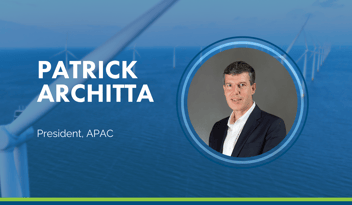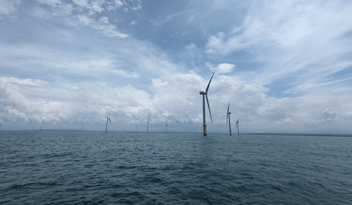
Bigger projects in North America means bigger focus on uncertainty
Between 2015 and 2017, the number of projects in which K2 Management undertook computational fluid dynamics (CFD) for its clients rose by 440% globally, highlighting that both investors and developers are investing in more detailed analysis - they are looking beyond the industry standard linear flow model.
The North American market in particular has faced significant challenges related to complex terrain and wind flow conditions. The larger project sizes that are seen in North America, accentuate the importance of highly accurate wind analysis and energy predictions.
The North American wind industry is addressing the historic issue of over-prediction – or under performance – in a benchmarking study driven by the National Renewable Energy Laboratory (NREL), with input from K2 Management and other key market stakeholders. The study is focused on wind analysis techniques and the development of better performance predictions, contributing to improvements in the market.
A decade ago, the North American market experienced significant over-prediction. This happened in part because meteorological masts were poorly sited during the development phase and simple wind flow models, such as WAsP, were used to model the wind flow across wind project sites.
However, simple flow models can poorly predict variations in wind flow or conditions between different heights, typically underpredicting the windiness variation with height. As a result consistent over-predictions were experienced when the masts were typically sited at the highest location on site.
How does this affect bigger projects?
Bigger projects mean larger investments and an increasing importance being placed on accurate wind and energy assessment. This leads to simpler models like WAsP being less accepted by developers who are looking for bankable wind analysis and investors seek less uncertainty and risk on their investments.
North America is a market that will benefit from CFD. Projects are of a much larger scale than onshore projects in Europe. While there is vast space available all of the optimal sites, such as the flat plains of central US, have been developed; developers are now looking to second-tier sites.
Areas in the northeast such as Maine, New York and Pennsylvania, are regions which will benefit from CFD as they have more diverse terrain and complex wind flow. Even a small improvement in the financials, and the cost of financing – which can be improved through CFD analysis – can have a big impact on capital cost, particularly at the scale of projects that are now seen onshore in the US.
Larger savvy developers now opt for CFD or mesoscale modelling – sometimes both
in tandem – for the lowest uncertainty which can contribute to the delivery of the most bankable project.
Why take a more detailed approach?
Stakeholders in the development phase of projects are seeing value in decreasing uncertainties through a more detailed wind analysis approach, but why?
CFD offers a more accurate energy yield prediction and reduced uncertainty, together this increases the bankability of an energy project. A reduced flow model uncertainty gives higher P90/P50 ratios, resulting in less capital investment for the project owner.
The benefit of using CFD is highest when applied at an early stage int he project. Here, the layout design can be informed by the CFD results and the project can be optimized for yield and operation before it has been commissioned.
The purpose of this is not only to find the best resource areas, but also to identify potentially adverse wind and terrain conditions which could impact failure rates and the useful like of a project.
Want to read more about CFD modelling and wider pre-construction trends?



